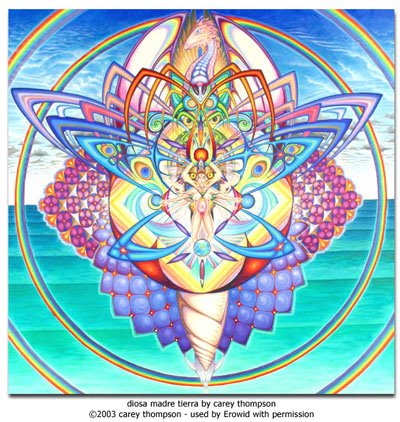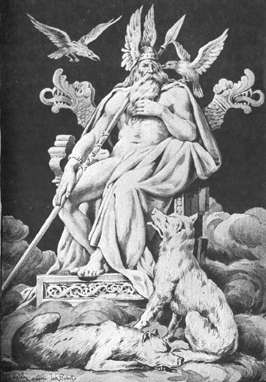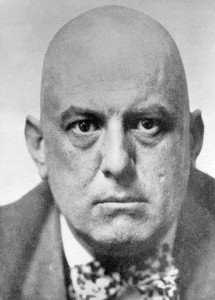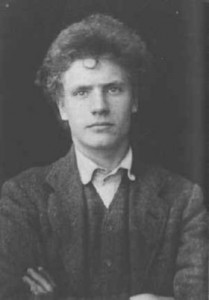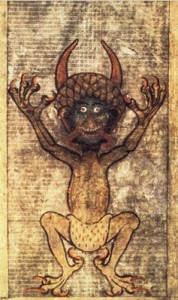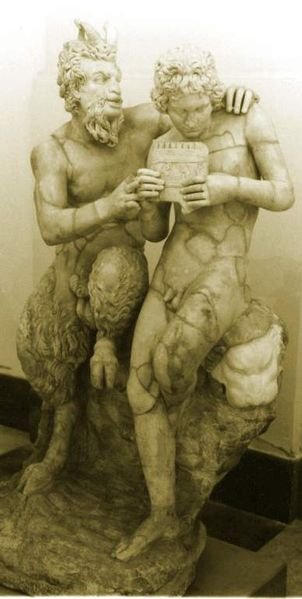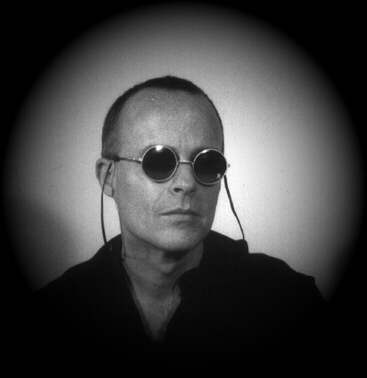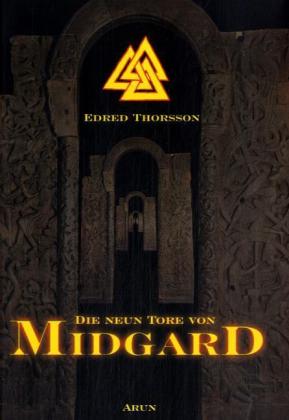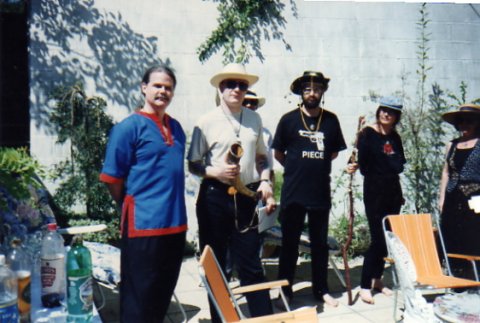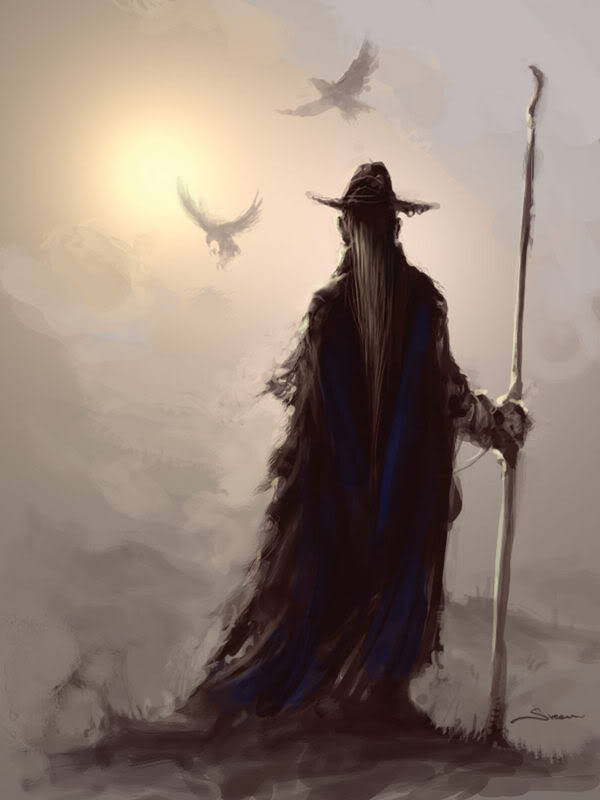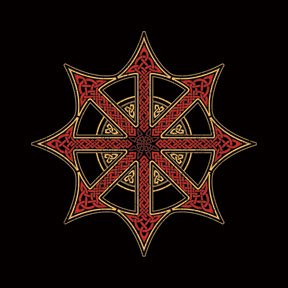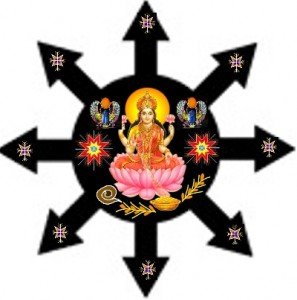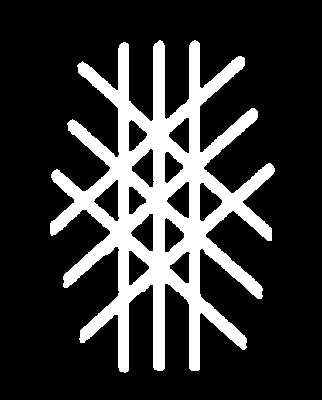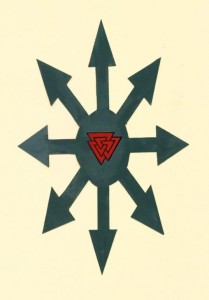One sometimes hears Heathen folk express the feeling that their culture is under attack; more than one Heathen I hold in high esteem has expressed the feeling that they are the target of cultural genocide.
I myself often resonate strongly with the sentiment expressed by Irish band Primordial:
Is this all I’ve been left?
Broken oaths and betrayals
The empty words and dead rhetoric
Of my sold and broken culture
And I said once before
That time heals nothing
I feel like a wounded animal
In the dying throws
Primordial make a particularly rich critique of monoculturalising capitalism; in footage of a live performance I have seen, their vocalist (A. A. Nemtheanga) announces to the audience between songs that “whoever you, whereever you come from, your rights are being taken from you!”
In a way this is a new face of universalisation – we are all the same in that our particularities are being assaulted and dissolved by a remarkable battery of largely commercial and technological social forces. How ironic and tragic.
And yet when straight, white men in patriarchal societies – and many of whom are financially comfortable – complain about being subject to genocide I cannot help but think they’re taking it all a bit far. Some Heathens even go so far as to be out-right whingers – you’d think such behaviour was mandated in Havamal!
The truth is that European ancestral heritage is most of all under assault from its own descendents. If we wish to preserve this heritage then it is European-descended people who need to be awoken from their post-monotheistic (or indeed monotheistic) slumber – at least for long enough that they can make a conscious decision about the course their lives might take.
On other hand, let’s take a reality check. Consider the awesome and under-acknowledged plight of the people of Tibet at the hands of Chinese imperialism.
These folk are being killed for the slightest infraction, forced at gunpoint to betray their traditions. What European can say the same? These stoic folk make the self-righteous outrage some Heathens express seem utterly fatuous, utterly childish. It’s a good thing Heathenism is so obscure or such vocal Heathen windbags would make us a laughing stock.
As part of my studies this year I had the opportunity to write a short report on the Stolen Generations of Aboriginal people in my homeland of Australia. I have presented it here so that my readers can get a clear idea of what it is actually like to be the subject of pre-meditated and systematic genocide.
Some apologists will accuse me of wallowing in ‘white guilt’ or the like, but personally I think this says more about them than about me. I don’t feel guilt at all, I just think it good taste to acknowledge cruelty and injustice even if if is inconvenient for one’s comfortable complacency to do so. Indeed, acknowledgement is the most important step in righting wrongs.
Restitution of wrong is an ancient Germanic tradition (c.f. the practice of weregild); many of those who mourn the loss of the old ways in one breath want to deny the responsibilities these old ways impress on them in the next breath.
Such individuals therefore misuse the word ‘Heathen’ when they apply it to themselves. Hypocrite is more on the mark.
As I say, I take the views of groups like Primordial seriously and in many respects empathise and agree. But ultimately we need to recognise that even in the loss of our heritage we whiteys haven’t really had it all that bad (well, the Irish have copped much more than most European peoples and I certainly acknowledge that aspect of Primordial’s perspective).
We need to stop wallowing in negativity and paranoia and blaming everyone else and get on with building a positive culture of hope.
Part of that process might include acknowledging the problems of the world, even the problems facing us specifically – but it has to be done in a way that inspires or transforms, not mires us in hopelessness, paranoia, or xenophobia (all of which are traits we have inherited from dualist monotheism and which are alien to the Heathenries of old).
Ok, rant off. Hope you enjoy reading my little report….
What Was The Forced Removal of Aboriginal Children?
It was a systematic attempt, made by State and Federal Australian Governments, to destroy so called ‘full blood’ Aboriginals and to quench Aboriginal languages and cultures.
The idea was to remove any children of mixed ancestry and intermix them into white society until their Aboriginal heritage became dilute and dissolved over generations. The thinly-veiled hope was that “full blooded” aboriginals would die out naturally (poisonous imperialist-political appropriation of evolutionary theory).
Between 1910 and 1970 10-30% of all Aboriginal children were forcibly removed without warning from their families on the basis of their skin colour – not because of any kind of genuine welfare issue or need (Dow, 2008).
They were placed in work camps and foster homes (often with a thin veneer of Catholic or Christian charity) where the treatment often severe or arbitrary. They were often shunted from one place to another without warning, explanation or consultation. Much of the work they had to do was unpaid – that is, slave labour.
Estimates vary according to source and methodology but we can pretty safely say that at least 25% of all children removed in this fashion faced physical or sexual abuse from their supposed carers.
Importantly, rates of indigenous child removal from families are still many times the national average and it is hard to believe that racism is not still a contributing factor to this, above and beyond genuine welfare issues (Reconciliation Australia, 2009). It certainly reflects the intergenerational consequences of the forced child removal policis.
Much of this was first systematically revealed in Bringing Them Home (Human Rights and Equal Opportunity Commission/Australian Human Rights Commission 1997), a Federal Government inquiry which received hundreds of submissions documenting untold human suffering and injustice.
The report popularised the term stolen generations in reference to the aboriginal children removed from their birth families.
Among its recommendations was advice that the Australian Government should offer an apology for its legislated acts against indigenous Australians.
Incidentally, former Prime Minister John Howard refused to apologise because he thought the current generation of Australians should not have to apologise for the actions of previous generations. Yet many Australians involved in the removals are still alive and more importantly indigenous Australians are still living out the consequences as fresh wounds – so his argument seems very weak.
Because so much is said about indigenous Australians, and so little energy has been spent listening to or acknowledging their experiences, I have attempted to use their own words to elucidate this presentation.
(All quotes taken from Human Rights and Equal Opportunity Commission/Australian Human Rights Commission, 1997 or Human Rights and Equal Opportunity Commission/Australian Human Rights Commission, 2007).
Consequences of Systematic Forced Removal
There’s still a lot of unresolved issues within me. One of the biggest ones is that I cannot really love anyone no more. I’m sick of being hurt. Every time I used to get close to anyone they were just taken away from me. The other fact is, if I did meet someone, I don’t want to have children, cos I’m frightened the welfare system would come back and take my children.
(Confidential evidence 528, New South Wales)
Relationships – we know that adoption runs best when the child is transplanted into a new environment that is secure and offers good opportunities for strong attachment development – hence the rigorous screening of potentially adoptive parents (Leon, 2002).
Forcible removal of Aboriginal children from their families involved them being shunted from place to place, abandoned to institutions or white foster parents that may have often been unfeeling or abusive. Having already lost their families, they then could not rely on having anyone else in their lives for very long – if indeed they could find any positive care-givers once they had been removed from their families.
As such they were treated in about as traumatising a way as possible for adoptees – their primary caregivers were taken from them (which is awful enough by itself) with uncertain possibility of finding a substitute securely attached care-giver. It is no surprise that there are significant negative personal and inter-personal consequences caused by these experiences.
Personal Consequences
I still to this day go through stages of depression. Not that I’ve ever taken anything for it – except alcohol. I didn’t drink for a long time. But when I drink a lot it comes back to me. I end up kind of cracking up.
(Confidential evidence 529, New South Wales)
Given the massive disruption and loss of attachment formation for these children, and the severe grief that goes with such wounds, it is not surprising that rates of mental illness and drug abuse are so high in Aboriginal groups. An individual’s abilities to form trusting relationships or have any kind of positive outlook on life would be severely impaired by these experiences.
We can imagine that these peoples’ experiences would leave them with very high baseline anxiety due to the fact that terrible things actually could and did happen at any moment. One is reminded of the concept of learned helplessness (Seligman & Maier, 1967) in this phenomenon.
Without understanding and support, and with their trust betrayed so frequently, it is no surprise that some Aboriginal people would struggle to seek help for their suffering.
And every time you come back in it doesn’t bother you because you’re used to it and you see the same faces. It’s like you never left, you know, in the end.
(Confidential evidence 204, Victoria)
Another significant pattern is that the more exposure to forced removal in personal and family histories, the more institutionalisation Aboriginal people are subsequently vulnerable to. Beaten down by abuse, loss and fear, they are thrust into a vicious downward spiral of despair and punitive control – hence the emotive and ongoing issue of the high rate of Aboriginal imprisonment and deaths/suicides in custody.
Inter-generational Consequences
When we left Port Augusta, when they took us away, we could only talk Aboriginal. We only knew one language and when we went down there, well we had to communicate somehow. Anyway, when I come back I couldn’t even speak my own language. And that really buggered my identity up. It took me 40 odd years before I became a man in my own people’s eyes, through Aboriginal law. Whereas I should’ve went through that when I was about 12 years of age.
(Confidential evidence 179, South Australia)
When it was originally commenced, the forced removal of Aboriginal children from their original families was explicitly justified in terms of destroying their entire cultures and race.
Government and religious/charitable agencies – no matter whether their intentions were good or not – systematically stamped out the stolen generations’ connections to their ancestral languages, beliefs, cultures and practices.
In terms of international law the Australian and State Governments, as well as the adjunct private agencies, were committing genocide and did so for sixty years. The consequent losses are dizzyingly incalculable on an individual level.
I have a problem with smacking kids. I won’t smack them. I won’t control them. I’m just scared of everything about myself. I just don’t know how to be a proper parent sometimes. I can never say no, because I think they’re going to hate me. I remember hating [my foster mother] so I never want the kids to hate me. I try to be perfect.
(Confidential evidence 529, New South Wales)
Having lost their true parents at a young age and being raised in institutional environments, many of those in the stolen generations had little experience of being parented. Without role-models, expectations or their own experiences of being parented to guide them they are left with unique challenges when presented with the task of raising their own children.
This in turn leaves them more vulnerable to the removal of their children for welfare reasons, which opens further layers of inter-generational disconnection, grief, loss and suffering. Even those born after the official end of forced-removal policies are forced to live out and face down the legacy of what was done to their parents and other family members.
Of course, the damage cuts both ways – the families who lost their young being wounded both personally and in terms of their social fabric.
Social Consequences
I felt like a stranger in Ernabella, a stranger in my father’s people. We had no identity with the land, no identity with a certain people. I’ve decided in the last 10, 11 years to, y’know, I went through the law. I’ve been learning culture and learning everything that goes with it because I felt, growing up, that I wasn’t really a blackfella. You hear whitefellas tell you you’re a blackfella. But blackfellas tell you you’re a whitefella. So, you’re caught in a half-caste world.
(Confidential evidence 289, South Australia)
Although the feeling of not belonging can occur in most adoption scenarios (Leon, 2002), for Aboriginal people the dilemma is particularly severe. They were put in the position of never truly being able to be accepted as white due to their skin colour, but were so dislocated from their culture of birth that they could not return.
This rootlessness and social alienation is a damaging existential wound which is difficult to quantify. Perhaps we can get some small insight into it with this thought experiment: imagine waking up every morning, looking in the mirror, and not being sure whether the person looking back at you is familiar or a total stranger. Imagine living that for the rest of your life.
I didn’t know any Aboriginal people at all – none at all. I was placed in a white family and I was just – I was white. I never knew, I never accepted myself to being a black person until – I don’t know – I don’t know if you ever really do accept yourself as being … How can you be proud of being Aboriginal after all the humiliation and the anger and the hatred you have? It’s unbelievable how much you can hold inside.
(Confidential evidence 152, Victoria)
Another significant social dimension of the removal is exposure to racism – both from white people but also internalised negative self-attitudes. Imagine being told your whole life that you must efface everything you are in order to become something that you will never quite be allowed to be!
The complexities of despair, pain, anger, hurt and guilt become written across the social context in the form of both internalised racism and of being a victim of racism.
Today many people dismiss Aboriginal peoples’ worth, judging them negatively because of the serious dysfunction in their communities. It is worth asking – with personal and cultural biographies like these would anyone cope any better? Unlikely.
Judging such folk for their perceived failings is terribly hypocritical, yet those affected by these forced removals might face such judgements every day of their lives, both from others and perhaps from themselves.
The Future?
Actually what you see in a lot of us is the shell, and I believe as an Aboriginal person that everything is inside of me to heal me if I know how to use it, if I know how to maintain it, if I know how to bring out and use it. But sometimes the past is just too hard to look at.Confidential evidence 284, South Australia).
As with any therapeutic endeavour, what ultimately matters is our willingness to have faith in those we work with regardless of how hopeless it all seems (Miller, Duncan and Hubble, 1997). This may take a lot of compassion, patience and care with the issues I have here discussed.
We have had two centuries of White Australia inflicting misery and failure on Aboriginal Australia by imposing and telling rather than consulting and listening, and this has played out dramatically in the case of the forced removal of aboriginal children. This has to change: one definition of insanity is doing the same failed action over and over and expecting it to yield different results.
References
Dow, C. (2008) ‘Sorry’: the unfinished business of the Bringing Them Home report (Australian Parliamentary Library Background Note). Retrieved 7 April 2009 from http://www.aph.gov.au/Library/pubs/BN/2007-08/BringingThemHomeReport.htm
Human Rights and Equal Opportunity Commission/Australian Human Rights Commission (1997) Bringing Them Home: Report of the National Inquiry into the Separation of Aboriginal and Torres Strait Islander Children from Their Families. Retrieved online 7 April 2009 from http://www.hreoc.gov.au/social_justice/bth_report/report/index.html
Human Rights and Equal Opportunity Commission/Australian Human Rights Commission (2007) The Effects Across Generations. Retrieved 7 April 2009 from http://www.hreoc.gov.au/education/bth/download/effects_resource.pdf
Leon, I. G. (2002) Adoption Losses: Naturally occurring or socially constructed. Child Development, 73 (2), 652-663.
Miller, S., Duncan, B. & Hubble, M., (1997) Escape from Babel: Toward a Unifying Language for Psychotherapy Practice (Norton Professional Books) . Norton: New York.
. Norton: New York.
Reconciliation Australia, Sorry FAQ. Retrieved 7 April 2009 from http://www.reconcile.org.au/getsmart/pages/sorry/sorry–faq.php.
Seligman, M.E.P. and Maier, S.F. (1967). Failure to escape traumatic shock. Journal of Experimental Psychology, 74, 1–9.





 “…To say what has never been said, to see what has never been seen,… to push the envelop of creativity and language…” Terence McKenna
“…To say what has never been said, to see what has never been seen,… to push the envelop of creativity and language…” Terence McKenna